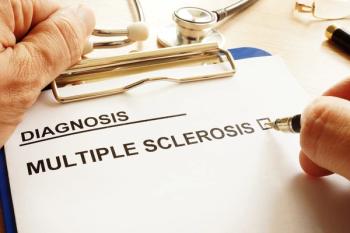
Understanding the Types of Multiple Sclerosis
Barry Hendin, MD: There are various ways to look at multiple sclerosis [MS], and I suppose one could subdivide MS into subcategories. But mostly, the old discussions were about Clinically Isolated Syndrome, the first event, which in many cases we now can just call early MS. There is relapsing MS. You’ll hear the term relapsing or remitting MS, but I think I prefer the term relapsing MS because even if the symptoms remit, the disease continues to go on with regards to inflammation and progression.
Too many people with MS go on to secondary progression. That means a secondary progression from the onset of their relapsing MS. And then there are people with primary-progressive MS, and those people never really have early relapses but rather a slow, gradual deterioration, often in walking and not exclusively, but over time.
A current consideration is to try to divide relapsing MS into one heading and progressive MS, whether it’s secondary or primary, into another heading with a few subdivisions in each. It’s probably useful to know both of those definitions: the standard definition and the evolving definition.
Amit Bar-Or, MD, FRCP, FAAN, FANA: Multiple Sclerosis, when it presents, can present in a relapsing-remitting form, referred to as relapsing-remitting multiple sclerosis. This is characterized by bouts of neurological dysfunction that come and either go away completely or go away mostly with some residual impact. Many of those individuals who started with a relapsing-remitting disease course will end up with what’s been called a secondary-progressive course, where the relapse has become less and less prominent or evident and what appears to emerge is a slow, ongoing worsening of neurological function, which has been referred to as progression. There are 10% to 15% of people with MS who start their disease course without obvious relapses, but a rather slowly progressive course, and they’ve been referred to as having primary-progressive MS, meaning progressive from the onset.
The importance of distinguishing between relapsing and progressive forms is that we’re now increasing the number of treatments that are being approved for relapsing-remitting and progressive MS, both primary-progressive MS and in the near future, secondary-progressive MS. With the presence of therapies that have been approved for those different types of MS, trying to establish the correct diagnosis is important. A major issue that is important for clinicians to understand is that a great deal of the injury in multiple sclerosis occurs under the surface, below the level of clinical detection. This is true for relapses that can biologically occur and cause bouts of injury without the patient or the clinician being aware of them. We know that if we follow people over time with frequent magnetic resonance imaging [MRI] scans, one sees damaging lesions come and go with a patient perhaps not experiencing a single relapse.
Similarly, the non-relapsing progressive biology almost certainly is occurring under the surface, starting much earlier than we appreciate clinically and continuing below our level of detection. So what we see clinically, whether it’s relapses or progressive aspects of MS, should be thought of as the tip of the iceberg, and we need to do a better job at capturing the injury process under the surface, so that we can make better decisions with patients in terms of either escalating their treatment or changing treatments over time.
Prognosis in multiple sclerosis continues to be an area that we are not doing as well as we would like to. Of course, for a patient living with MS, the single most important question perhaps is what will happen to me in the future? We have a range of features that relate to the clinical experience and MRI features that can help us prognosticate. But we’re still falling short in terms of accurate prognostication at the level of individual people living with MS. Those who have a primary-progressive course from onset, on average, may expect to have a worse course of progression regarding their neurological impairment. Although there are those patients with primary-progressive MS who progress very, very slowly and have rather limited disability over time. Similarly, relapsing-remitting MS is a spectrum ranging from rather mild and infrequent attacks that are not debilitating to very frequent and potentially very debilitating attacks.
Barry Hendin, MD: I think that neurologists have probably been too focused on being neurologists over time. And it’s become clear that in the field of MS, but not only in MS, that a person’s general health impacts their neurological health. So whether the problems are smoking, obesity, hypertension, or diabetes, each of those negatives—either singularly or in combination—worsens the prognosis, increases the likelihood of progression, and increases the likelihood that the course of MS will be less favorable. That means for neurologists treating MS, we’re really responsible for taking a closer look not just at the neurologic side of MS, but also the medical comorbidities.
Newsletter
Stay ahead of policy, cost, and value—subscribe to AJMC for expert insights at the intersection of clinical care and health economics.







































